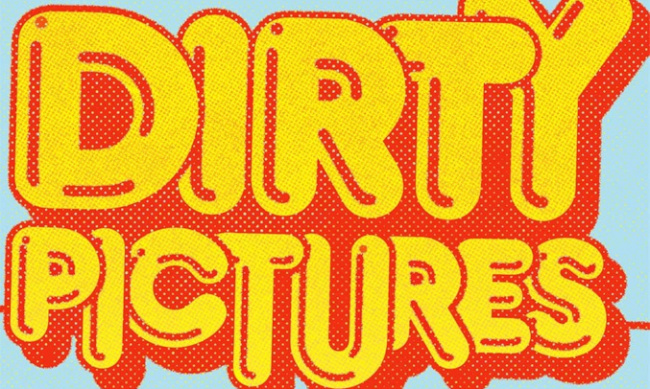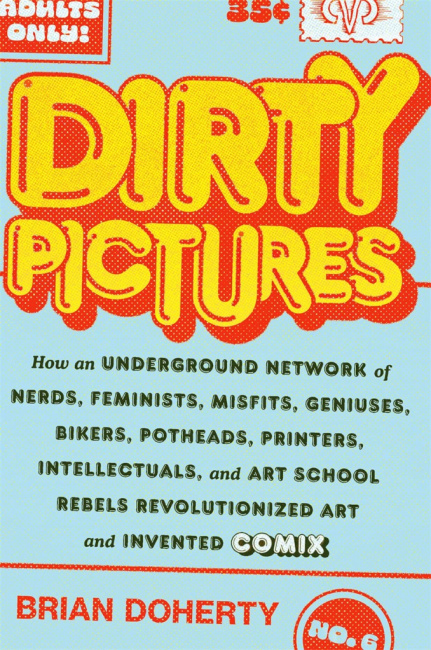Half a century on, the underground comix pioneered in the late 1960s are at once everywhere and nowhere. The artwork of the movement’s leading figures like R. Crumb, Gilbert Shelton, S. Clay Wilson and the rest has become visual shorthand for the counterculture, and an increasingly uncontroversial addition to the canon of 20th century art in the minds of collectors and museum curators. Meanwhile the do-it-yourself, creator-driven ethos that distinguished undergrounds from their more commercial counterparts has become the coin of the realm for dozens of comics publishers running the gamut of subject matter, from literary work to genre and superheroes.
Bringing undergrounds to the surface. Despite their vast impact, the whole story of the underground comix movement has never been fully told in a coherent, systematic way. Sure, over the years we’ve seen some good work focus on individual creators or publishers, and some good bibliographic work tracking down the titles and print histories from a collectors’ perspective, but nothing that lays the whole story out beginning to end.
Dirty Pictures: How an Underground Network of Nerds, Feminists, Misfits, Geniuses, Bikers, Potheads, Printers, Intellectuals and Art School Rebels Revolutionized Art and Invented Comix, a new book by Brian Doherty published this month by Abrams Press, is an ambitious attempt to set the record straight. Clocking in at close to 400 pages with ample notes and references, Dirty Pictures catalogues the many tall tales and memorable anecdotes that have served as the folklore of the underground movement; takes stock of the colorful cast of creators, publishers and retailers; and draws a through line that starts with Harvey Kurtzman’s MAD and Disney funny animal comics of the 40s and 50s and leads directly to the diverse independent, artistic and literary comics and graphic novels of the 2020s.
Doherty is a senior editor at the libertarian-leaning Reason magazine, contributor to a range of mainstream and comics publications, and previously covered another contemporary avatar of the counterculture, the Burning Man festival. On the comics side, he knows his stuff, and when he doesn’t, he knows who to ask. A lot of his information comes from firsthand interviews with participants in the movement, and he has clearly cross-checked some of the shaggier shaggy dog stories rather than just repeat them for posterity.
Black and white comics, colorful creators. Doherty anchors the story around a core cast of characters at the center of the underground pantheon: Robert Crumb, Art Spiegelman, Trina Robins, Kim Deitch, Denis Kitchen, Spain Rodriguez, Harvey Pekar and Howard Cruise among many others. Each member of the cast comes and goes through the story, weaving together different threads and themes as we tick through the well-known historical milestones like the publication of Zap #1.
Dirty Pictures is at its best when it connects the dots of the personal and professional relationships, as well as the connections between underground comix and its seemingly very distant cousin, the mainstream comics industry. For example, an early locus of networking was the Topps bubble-gum card company in the mid-1960s, where a very young Art Spiegelman, who knew his comics history, found himself supervising the likes of Wally Wood, Jack Davis, a pre-ZAP R. Crumb, and other comics greats picking up commercial art freelance projects. This is how many of these older veterans ended up rubbing shoulders with Spiegelman and Crumb in Wally Wood’s groundbreaking independent "pro-zine" Witzend. Further connection: the shop was run by Woody Gelman, who ran the early comics reprint company Nostalgia Press on the side.
There is also a hilarious story of Trina Robins bringing pot brownies to a late 60s Marvel bullpen event, and of Spiegelman, who worked briefly as a colorist at Marvel in that same era, receiving a stern warning from production manager Sol Brodsky for coloring police cars pink.
Doherty’s focus on characters and personalities brings the historical details to life. It also illuminates the relative socio-economic diversity of a movement that gets all lumped together, but actually comes from a number of different places: see the book’s hilariously long subtitle for a clue. These days, political divisions tend to follow geography, at least in the popular imagination. One of the more interesting features of the underground movement was how the desire to use the comics medium to tell personal, political, satirical, profane and expressive stories captured the imagination of everyone from stereotypical coastal hippies to nerdy artists to freaks and bikers from the heartland, with the big caveat that most of these people were white and the vast majority were male. The fault lines eventually came to the surface in the 70s as the "war on drugs" closed down the books’ main distribution channels and the boom times went bust.
The rise and fall of the business. For ICv2 readers interested in the history of the business side, Doherty covers the pivotal role played by publishers, distributors and retailers, using the same thorough journalistic, multi-faceted approach. This is a part of the history that seems especially overgrown with dubiously-sourced stories. He focuses on the main movers on the publishing side, Rip Off Press, Last Gasp, Kitchen Sink, and later Raw, Weirdo and Fantagraphics, but also points out the role that some stores and conventions played in bringing together the different audiences for comics and comix. As I have been researching my own book on a part of the comics publishing business that dovetails with the undergrounds in this era, I was continuously impressed at the ancillary characters and stories that Doherty brought to light.
The final third of Dirty Pictures brings the underground story out of the 60s and 70s, tracing its relationship to the independent comics of the 80s and 90s, and the graphic novels of today. In a valedictory chapter, Doherty touches on the "contested legacy" of the undergrounds, which used shocking imagery to shatter so many boundaries half a century ago, but appear coarse and offensive through the lens of 21st century cultural values and sensitivities.
TL:DR Snap Judgment. If this topic interests you at all, Dirty Pictures is likely to be the most complete and authoritative account we’re going to get, and is well worth a read. My biggest complaint? False advertising! There is not a single picture, dirty or otherwise, in this entire book! Perhaps Abrams ComicArts could correct this with a coffee table companion edition?
The opinions expressed in this column are solely those of the writer(s), and do not necessarily reflect the views of the editorial staff of ICv2.com.
Rob Salkowitz (@robsalk) is the author of Comic-Con and the Business of Pop Culture.

Column by Rob Salkowitz
Posted by Rob Salkowitz on June 27, 2022 @ 5:26 pm CT




